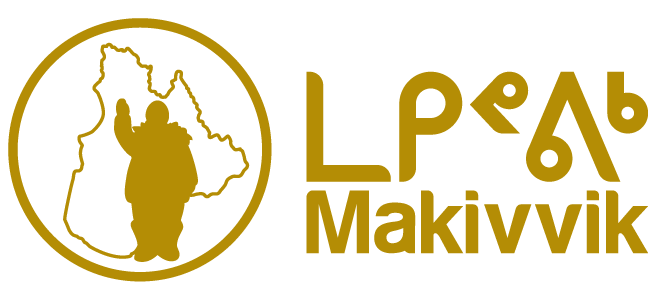Meaning: The giant
Population: 1597
 Inukjuak is located on the north bank of the Innuksuak River, known for its turquoise water and turbulent rapids. The many archaeological sites scattered along the meandering river evidence thousands of years of inhabitation. The land around Inukjuak is marked by gently rolling hills and open spaces which endow the landscape with a “silent beauty,” in the words of local Inuit. From the tundra, one may admire a splendid view of the village, its small port, the Hopewell Islands and Hudson Bay. In spring, ice between these islands and the mainland is moved by the action of tides and currents to create a spectacular field of immense, upraised blocks of ice.
Inukjuak is located on the north bank of the Innuksuak River, known for its turquoise water and turbulent rapids. The many archaeological sites scattered along the meandering river evidence thousands of years of inhabitation. The land around Inukjuak is marked by gently rolling hills and open spaces which endow the landscape with a “silent beauty,” in the words of local Inuit. From the tundra, one may admire a splendid view of the village, its small port, the Hopewell Islands and Hudson Bay. In spring, ice between these islands and the mainland is moved by the action of tides and currents to create a spectacular field of immense, upraised blocks of ice.
Inukjuak is located on the north bank of the Innuksuak River, known for its turquoise water and turbulent rapids.
At the beginning of the 20th century, the area was given the name Port Harrison and the French fur trading company Révillon Frères established a post here. For its part, the Hudson’s Bay Company (HBC) opened its in 1920. Competition between these companies ended in 1936 when the HBC bought out Révillon Frères.
The subsequent HBC fur trade monopoly continued until 1958. The St. Thomas Anglican mission was founded in 1927 and, in the years following, the federal government began delivering basic community services in Inukjuak: a post office and a Royal Canadian Mounted Police attachment were opened in 1935, a nursings station in 1947 and a school in 1951. In 1962, the co-operative store opened and, in 1980, Inukjuak was legally established as a municipality. Throughout this period, most Inuit however continued to prefer their traditional lifestyle on the land and only began settling in the village in the 1950s.
A much more painful period in the history of Inukjuamiut incongruously involves Resolute Bay and Grise Fjord, communities created 2000 km away in the High Arctic. It was in 1953 that Inuit from Inukjuak were involuntarily relocated north by the Government of Canada, essentially, in order to act as flagpoles. They represented this country’s efforts to occupy the uninhabited High Arctic and counter the feared expansionist activities of other nations. Families were split up and relocatees were placed in the cruel position where to survive they had to quickly acquire new hunting techniques in the face of much harsher climatic conditions. In 1996, the Canadian government provided monetary compensation to the surviving relocatees and their families, but this settlement fell short of apologizing to the Inuit for the hardships they had endured. Instead, it offered a of reconciliation.’ History should remember these people for their important role in establishing Canada’s presence in the High Arctic.
ATTRACTIONS
- Daniel Weetaluktuk Museum: the museum exhibits a magnificent collection of Inuit arts and crafts as well as traditional tools, hunting and fishing gear.
- Innalik School lobby: bas-relief sculptures depicting day-to-day life in an Inuit community are permanently on exhibit.
- Hopewell Islands: summer nesting area of many migratory birds.
- Wildlife observation.
Source: Nunavik Tourism Association
